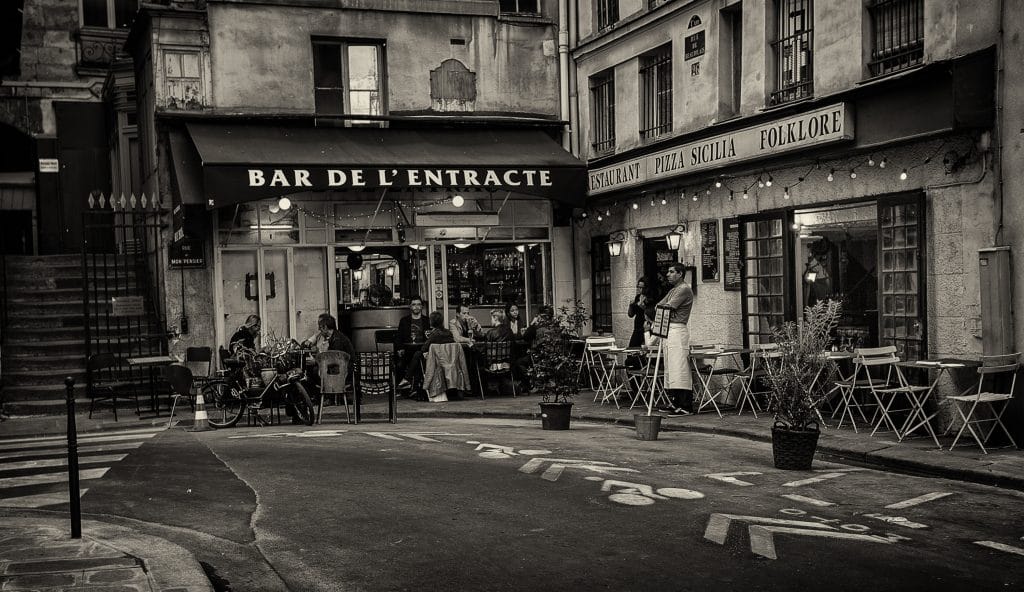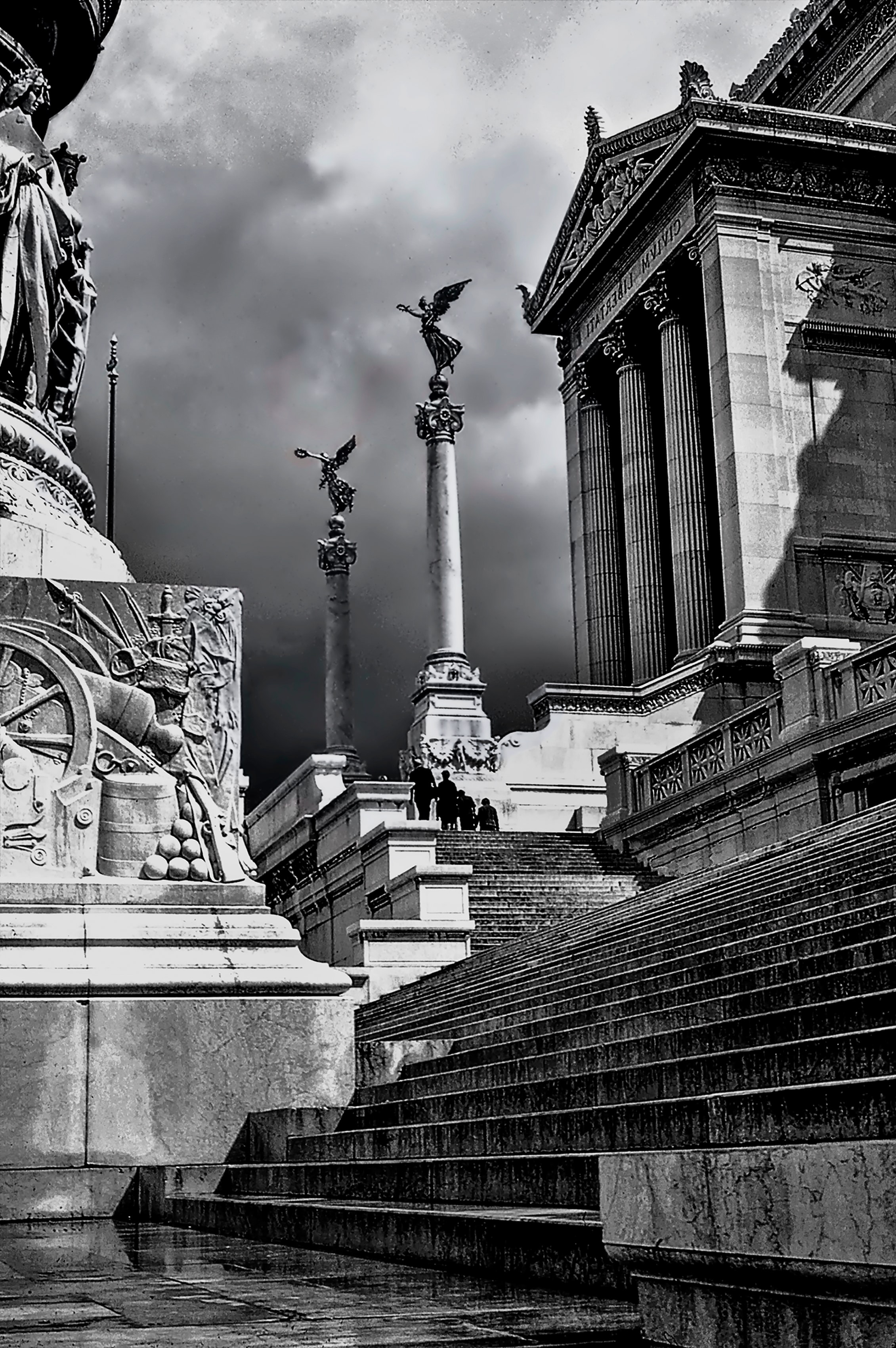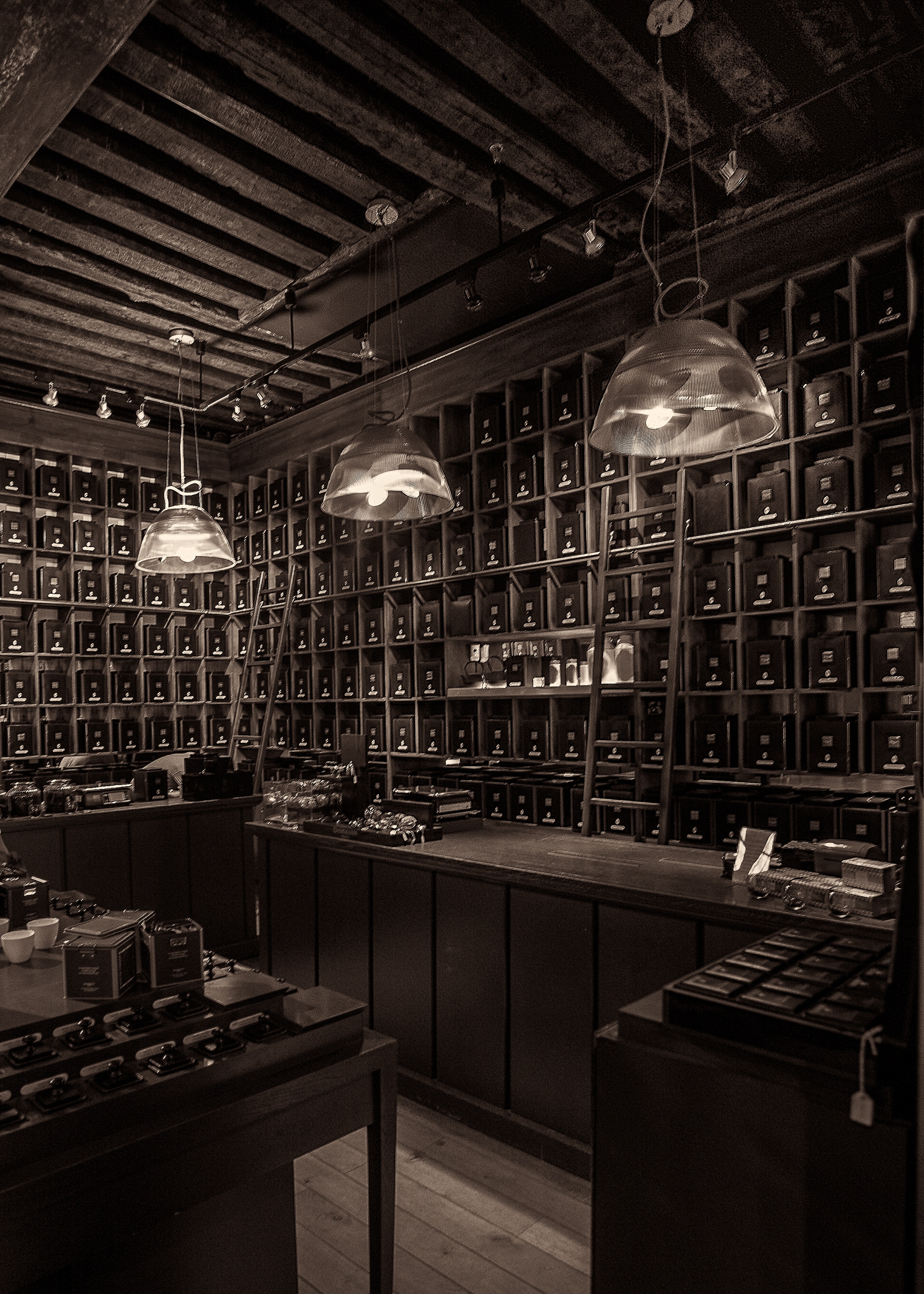What I’ve Learned: A Photographer’s Journey is a Masters of Photography series dedicated to our students, exploring the stories behind the imagery they have created. For other student interviews check our blog posts.
Paul Marvuglio is a photographer that is currently retired and works on his craft in New Jersey, USA. The photo below was posted to our photostream by Paul and it immediately caught our attention. We loved the sense of atmosphere of the setting and the plethora of different textures and tones in his black and white work. His photos often have a real richness in detail and a level of intensity to them. In Paul’s images we are also reminded of the work of Eugene Atget of Paris streets. Interested, we got in touch with Paul to do a Photographer’s Journey exploration to find out more about his work and his inspirations.

Tell us about yourself
I spent my working life in the pigment industry working with colour which “explains” my preference for black and white photography. I now am living in New Jersey and have finally retired. This is my second stint in New Jersey was born here but have spent 20 years out of the state. I live just beyond the urban sprawl in the garden part of the Garden State, 45 minutes from the Hudson and an hour and a half from Manhattan.
I was a snapshot photographer for many years. When I retired my photography became more serious endeavour and provides a bridge from my working days to my at leisure days.

How long have you been into photography?
I started in 1965 taking snapshots, but didn’t get into more involved photography until 1971, I had a wet darkroom until 1987 and then went back to snapshots until 1998 when I converted to digital. I did not get seriously interests in landscape photography until 2004. Since then I have created 6 self-published books. This was more a scrapbooking effort than a literary effort. I substituted piles of pages for piles of prints. My photography is now trending toward urban photography hence the course. The big adjustment was not shooting on a tripod. It felt uneasy for a while.
What made you want to start taking photographs?
I was stationed in Greece and would take pictures to send home. Then in 1971, I started to take pictures to send to the grandparents back east.

OLYMPUS DIGITAL CAMERA
What do you enjoy in photography?
Between photographing and printing I enjoy printing. Photographing is an immediate process 1/125 or 1/250th of a second and you’re done. You capture what you pointed the camera at. Printing is a more involved process requiring involvement for a longer period of time. While you are bound by your ”negative” on what you can create, the final print is bound by your skill and creativity. Making a silk purse from something other than silk. The wet darkroom was changing in the immediacy of your actions. Reproducibility was difficult for other than for straight prints.
The digital darkroom offers a more considered approach to image creation. You have the ability to “sketch” until you find the image you prefer and then print. You can then print it again with or without additional corrections from the place you stopped, not from the beginning. What I like about printing is having more control over the result. At the end of the day you can look at what you created with a sense of accomplishment, rather than “how did that happen?”
What is your favourite piece of kit?
The camera I have used mostly is a Canon 5D with a variety of lenses (mostly a 17-40), as I moved to more urban type shooting and traveling by Air I have taken to using a Olympus Pen F with a 24-80 mostly due to the weight reduction. My style is to carry my camera in hand all day using my pockets as a camera bag. The Pen F has a little more distortion at wider angles than the full frame Canon. I started photographing with a Petri 7S range finder with a match the needle exposure system. A digital version would be my choice today.
From a software choice I use Photoshop CC mostly because I know how to use it. I have tried Lightroom but I go back to PS because I know how to do it in PS. The DXO Silver Effects Pro plug-in; is the software I would hate to lose it offers a great deal of control in converting to black and white. Ease of use and familiarity is what drives my preferences I like the Canon because my fingers know where the buttons are, muscle memory. This also applies to Photoshop. I am a creature of habit.

What was the most influential moment in inspiring your photography?
I don’t really have an epiphany moment. What encouraged me to purse photography further is when I had a photo accepted in a juried art show. I then approached exhibiting as an exercise to determine if my photography had and merit.
What does your photography say about you as a person?
Photography can say little about you as a person; it can reveal a level of skill and artistic ability. Who you are; photography can only infer; through the photographs you chose to take and share with others. Even that can be misleading. What you take is in some way dictated buy your situation – combat photographers are duty bound to picture death. If working for House and Gardens, plants and flowers are the photographs of choice. What is taken is also dictated by what is selling or what an editor thinks meets his needs.
What photography says about me is I have an eye for what and when to take a picture and my selection of subject has some artistic merit. Additionally that I have mastered the technical skills needed to create a useful image. My photography tends to be, as one teacher put it; classical. My photography is not edgy but more traditional. I tend to print darker than most. This prompted another photographer to comment that my photographs were morbid. You could use my photographic style to describe me as a cautious, follow the rules sort of person, a bit of a perfectionist and not particularly perky with a dry sense of humour?

Which photographer or book has had the biggest impact on you? Why?
Two photographer’s books are involved in creating my approach to photography. Ansel Adams series on photography and Vincent Versace’s “Welcome to OZ”. Both developed the concept that photographs are “composed”. That photographic development and printing are not a static rote process but can be manipulated to create a photograph that expresses your view. The concept of fine art photography verses documentary photography.
Are you working on a photography project?
I have several photographic projects under way.
- I am compiling a portfolio of a series of food at farmer’s market pictures.
- Scanning Family pictures to create a book of my extended family to allow others in the family to see them. Now just a box on pictures in my closet.
- A longer rang project is to photograph “Passages” in Paris. Those narrow shopping areas more alleys than streets. I am now at the research stage as to where. The project will start in 2020.

What are your favourite photographs that you have taken?
- Princeton Battle Field Farm. This is a farm in Princeton taken from a post that marks the battle of Princeton. It is a 6 image panorama. (photo 2)
- Victor Emmanuel Monument Rome. This image started as a colour slide in 1960 was scanned in the early 2000’s and converted to black and white. It had defects –Halos, these were finally repaired his year (photo 4).
- Tearoom. This a Teashop in Paris at the Place des Vosges, 2014 (photo 7).
- Passage Du Chantier Paris. There is a person in the picture, 2017 (photo 3)
- Street Performer Italy. This is a composite of a street performer in Venice Italy. His expression changed as people walked by. A frown if you did not donate a smile if you did. Street photography after post processing (photo 6).

What is your favourite photograph from a different photographer?
Yousuf Karsh’s portrait of Winston Churchill. I don’t know if it’s the image or the back story. Churchill’s expression was the result of Karsh plucking the cigar from Churchill’s mouth.

How did the course benefit you?
The ability to be in the moment and approach urban photography, not as outsider looking in – candid photography, but as an insider photographing the surrounding goings-on.
In the course you have taken with us, what was your favourite lesson?
Joel Meyerowitz Lesson 29: Tuscany- Inside Light.
First it was a conversation between two people. Not a single individual talking at you. They were talking together and at you describing their creative process… The conversation on how two people can take their different skill sets and cooperate in producing something. In this case a book. Two views one task.

A Photographer’s Journey credits.
Photos 1,2,3,4,5,6,7,9 by Paul Marvuglio
Photo 8 by Yousuf Karsh
Get 7 amazing free lessons from the Masters
Each complete lesson is packed full of tips and tricks from some of the greatest photographers in the world
If you’d like to learn more about all our Masters Of Photography, then why not join up to our Free Online Photography Courses, where you can trial some content for FREE before you enrol in a photography course. You'll get a lesson from each our Masters: (Albert Watson, Cristina Mittermeier, David Yarrow, Joel Meyerowitz, Nick Danziger, Paul Nicklen and Steve McCurry!). They'll cover a number of genres of photography including landscape photography, street photography, fine-art, sill life, fashion, travel photography, conservation photography, wildlife photography and much more.

